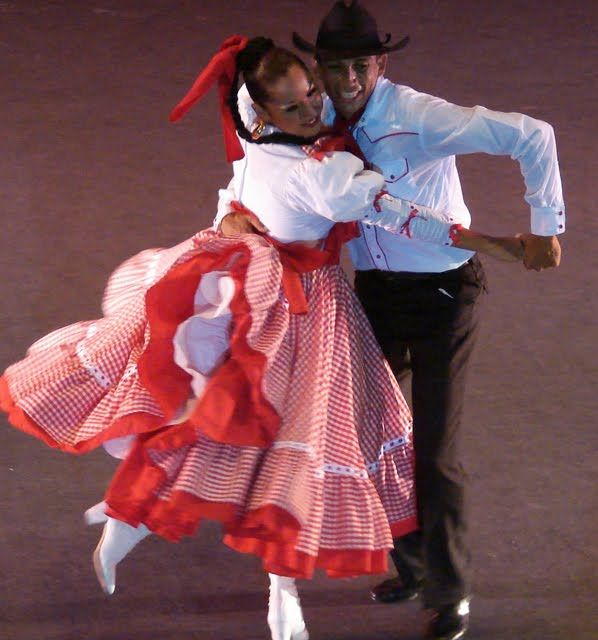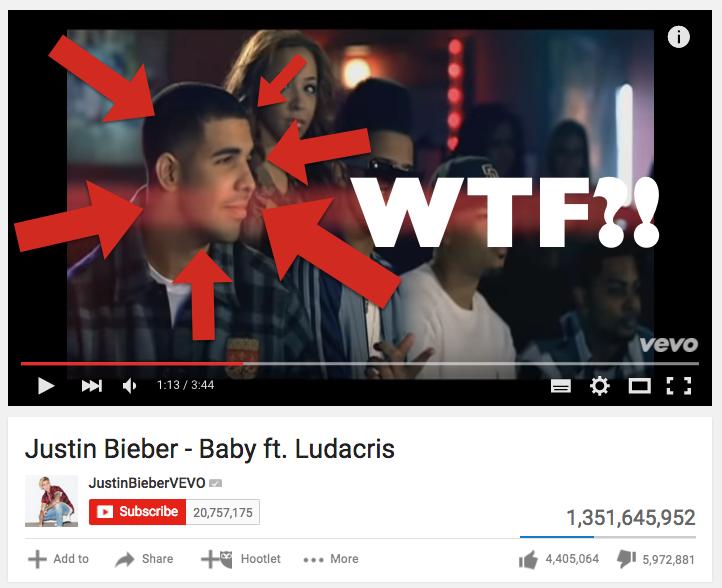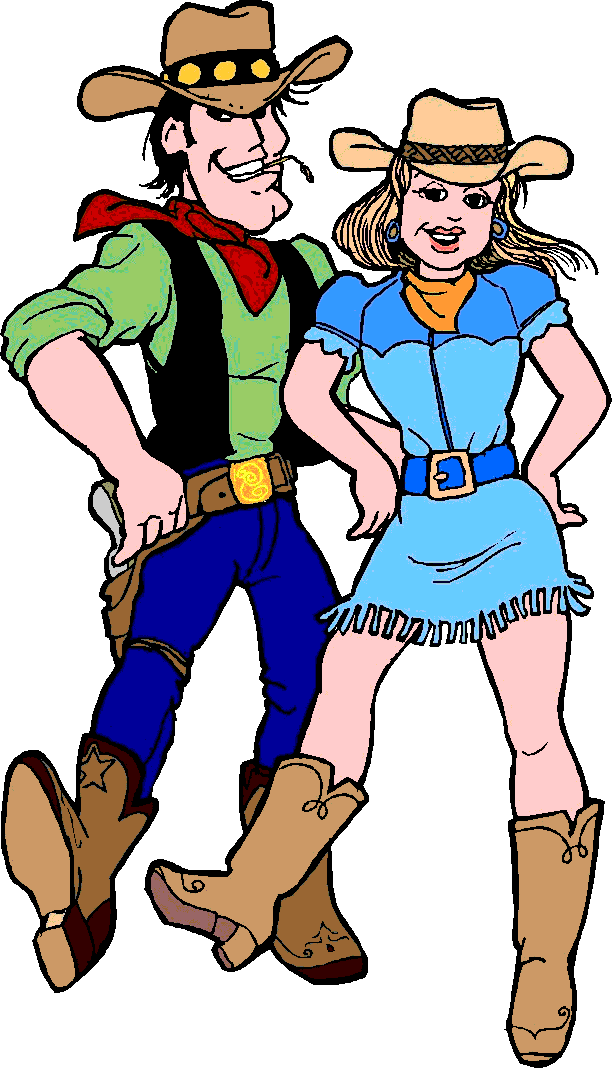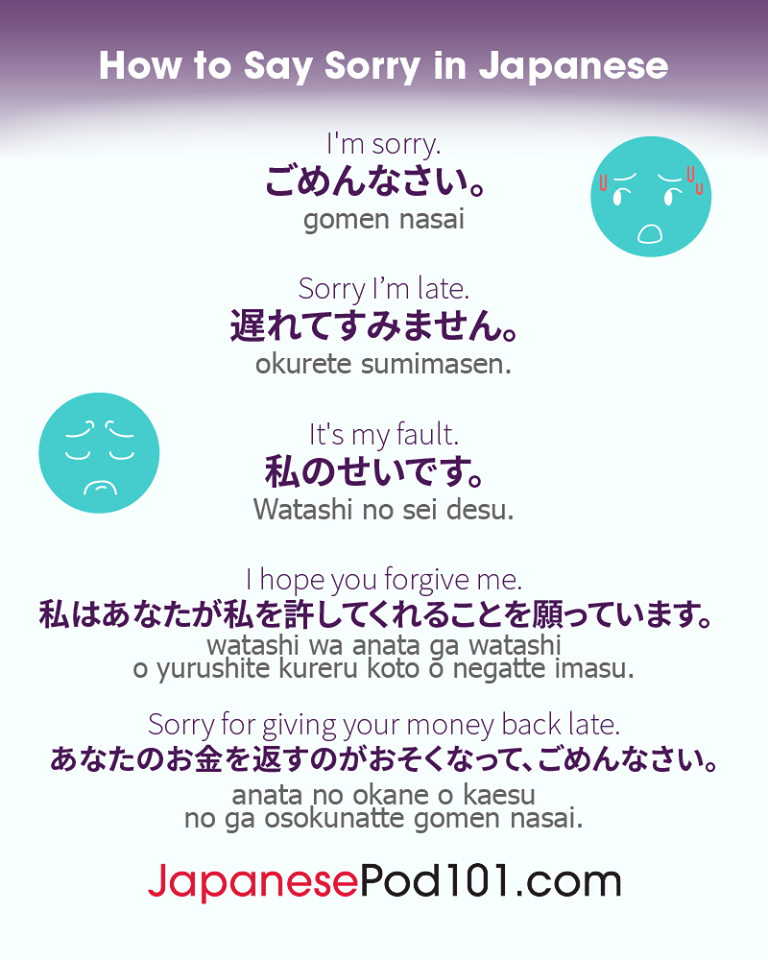How to dance tipico
Dominican Dance: Merengue and Bachata
Music and dance—more precisely, merengue and bachata—are at the core of Dominican life every day, in every neighborhood, in every corner. They top all the other DR cultural elements including cockfighting and baseball. It’s no exaggeration to say that there is no life without twirling your body to music coming from either deafeningly loud speakers or from a live band. Sometimes it seems as if every day is a party in the DR. You’ll be hard pressed to find a Dominican, male or female, who doesn’t know how to dance merengue or bachata—it’s simply not possible. They have their favorite artists and songs, and the older the generation, the longer that list seems.
Beyond the party aspect, merengue and bachata have a deeper significance culturally. Lyrics reflect social aspects of life and can talk about love, sex, politics, humor, and everyday struggles. Romance tops it all, though, as Dominicans are as poetic as it gets.
Dancers in Santo Domingo.Merengue
Merengue is the national music and dance of the Dominican Republic and has become a word and worldwide genre that is synonymous with the country itself. Merengue is the essence of being Dominican: its instruments reflect the mixed heritage of the country: an accordion (European), a two-sided drum (African) placed on one’s lap, and a güira (Taíno), a sort of metal cylinder with holes, with a brush that is run up and down across its surface. The accordion was brought over by the Spanish, but it was later retuned to play merengue notes.
Some say the word originated during the colonial period, from African dances. Merengue’s 2/4 beat is danced as a couple and has an intoxicating rhythm that can range from moderately fast to really fast. That’s because there are various types of this genre. The folkloric, traditional kind is known as Perico ripiao or merengue típico. It is believed to have originated in the Cibao region (while others say it might have come from Cuban influences) at the end of the 19th century, and can be considered the “country music” of the DR.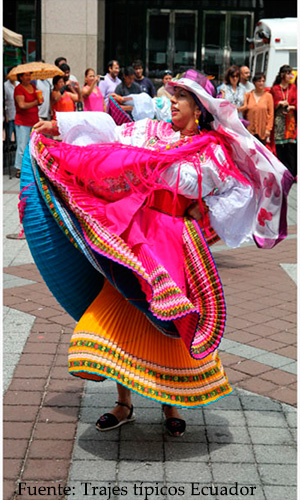
One well-known, award-winning perico ripao performer is Facundo Peña, from the village of Guananico in the Puerto Plata province, birthplace of generations of merengue típico performers and instrument makers, still going today. If you’re lucky to be in this area in late November, contact the UMPC (tel. 809/696-6932, local tourism network for Puerto Plata)—for information on the annual merengue típico festival.
Ironically, merengue was rejected by the upper classes at first, considered as music of the masses with vulgar movements (the same was later considered of bachata). But Trujillo arrived and changed all of that, putting merengue on center stage any many of his events and parties.
How do you dance the merengue? The man leads—holding the woman’s waist with the right hand—and the couple dances by swaying their hips sensually left and right, but without swinging the torso. They turn, step side to side occasionally, but never release hold of both hands—only one at times.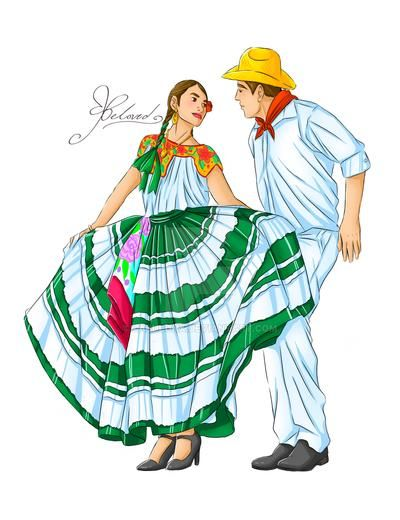 If you’re a woman, your job is simply to follow the cues and keep swaying your hips while maintaining the steps and your posture. If anything, it’s a great workout. It’s relatively easy as well. You can take lessons in various parts of the country if you’d like to practice before you brave the dance floor.
If you’re a woman, your job is simply to follow the cues and keep swaying your hips while maintaining the steps and your posture. If anything, it’s a great workout. It’s relatively easy as well. You can take lessons in various parts of the country if you’d like to practice before you brave the dance floor.
Juan Luis Guerra, today one of the greatest Grammy-winning and world-renowned Latin artists, is perhaps the biggest merengue figure of the 1980s and 1990s. He took the genre and mixed it with the modern sounds of pop and jazz. One of his classic songs is Ojalá que llueva cafe (I wish it would rain coffee). Other typical merengue songs include La dueña del swing by Los Hermanos Rosario, Dominicano Soy by Fernando Villalona, and Vamo’ hablar inglés by Fefita La Grande.
While the younger generation is leaning toward a more modern merengue with guitars and saxophones or toward the “dancehall” version of Dominican music—known as dembow—merengue típico continues to be appreciated and to vibrate in the Cibao region’s cities and villages along the rancho típicos, as well as in the capital of Santo Domingo.
Bachata
Bachata grows more popular every year and was recently declared the national patrimony of the DR. Bachata is a more sensual, slow genre that was made popular among the working class for the longest time before it received fuller recognition. Bachata was influenced by the Cuban bolero, but originated in the DR and is unique to this country. It was looked down on by the upper class for a long time, considered the music of bars and brothels, with lyrics about romance, sex, and poverty. Plenty of double entendre (doble sentido) and sexual connotations are hallmarks of bachata, which took shape in the 1980s, and for this reason is culturally entrenched. It’s the music of love and heartbreak.
Instruments used in bachata, a three-step dance with a fourth tap step, are numerous: guitars (lead, electric bass, rhythm), bongos or drums, and the güira.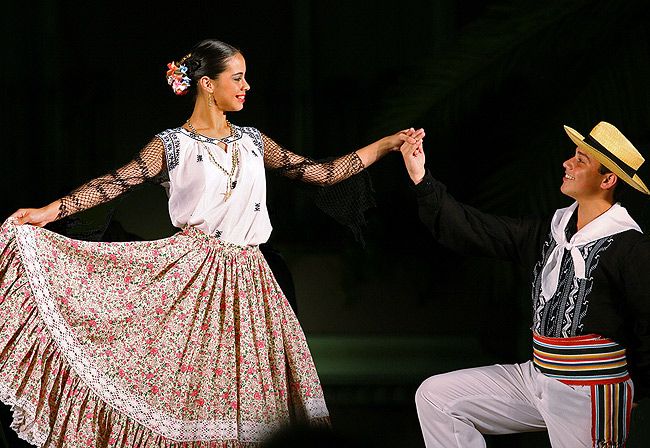 The dance takes two partners, with the man leading as always. They stay close together when they move their hips, as if forming a square or box with their feet, then engage in a push and pull with the hands, depending on one’s style. Artists credited for taking bachata to the international stage are Juan Luis Guerra, with his album Bachata Rosa, and more recently, Romeo is blazing his way through the charts. Among other famous bachata artists are Aventura, Raulín Rodríguez, Frank Reyes, Anthony Santos, and Luis Vargas.
The dance takes two partners, with the man leading as always. They stay close together when they move their hips, as if forming a square or box with their feet, then engage in a push and pull with the hands, depending on one’s style. Artists credited for taking bachata to the international stage are Juan Luis Guerra, with his album Bachata Rosa, and more recently, Romeo is blazing his way through the charts. Among other famous bachata artists are Aventura, Raulín Rodríguez, Frank Reyes, Anthony Santos, and Luis Vargas.
Other genres you’ll hear in the DR include salsa, son (especially in Santo Domingo), dembow, the popular reggaeton, and even Dominican jazz—often at the Dominican Republic Jazz Festival on the North Coast. A great way to experience all the various folkloric dances of the DR, in a historical timeline and one sitting, is to watch the two-hour performance by the Ballet Folklórico del Ministerio de Turismo.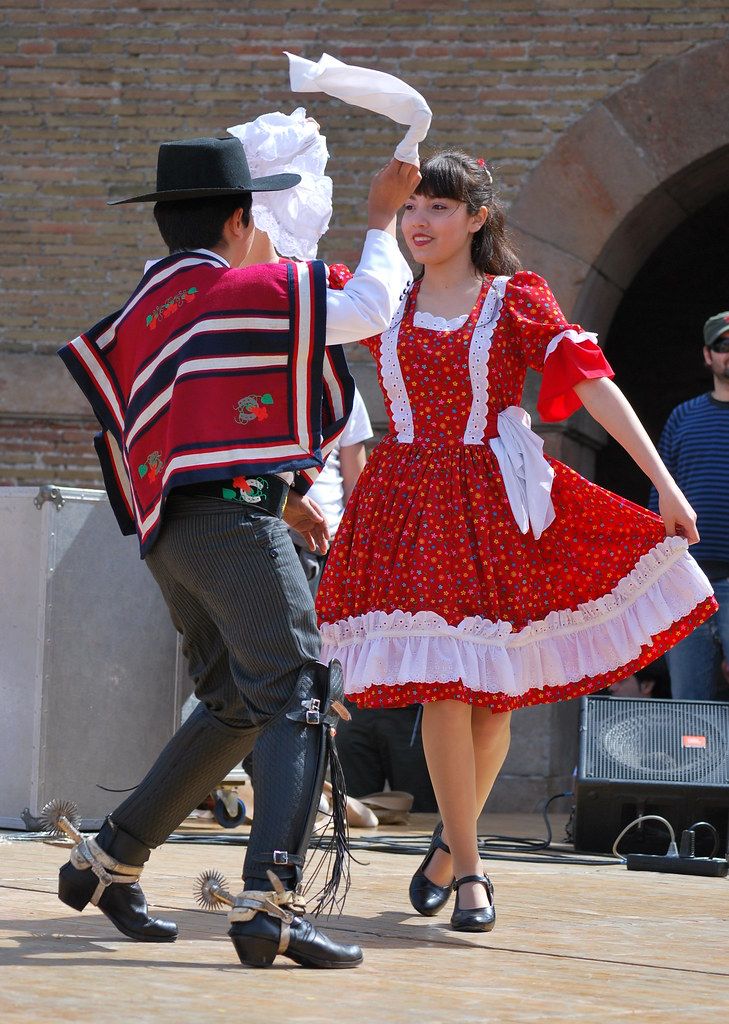 The group performs a free dance show, complete with live instruments, twice a week in the Colonial Zone (Fri. and Sat. starting at 7pm), by Plaza de España, and it goes over all of the dances and music of the DR—including African—in colorful costumes. You’ll even get to dance with the group members at the end.
The group performs a free dance show, complete with live instruments, twice a week in the Colonial Zone (Fri. and Sat. starting at 7pm), by Plaza de España, and it goes over all of the dances and music of the DR—including African—in colorful costumes. You’ll even get to dance with the group members at the end.
For an album with a mix of merengue, bachata, and other Dominican genres, a good pick is Latin Hits 2015 Club Edition. For merengue típico, look up El Mero Merengue—Lo mejor del perico ripao (1995).
Related Travel Guide
A choreomusical perspective on merengue — Experts@Syracuse
As a dance, Dominican merengue is typically described as "simple"-so simple, in fact, that it has not yet received scholarly attention as dance. By providing a choreomusical perspective on merengue, this article shows that quite the opposite is true. In the specialised world of traditional merengue tipico, dancers serve as regulators of tradition. Dancers are judged by their corporeal understanding of musical structures and rhythms. In turn, skilled dancers are valued by musicians and exert a moderating influence on musical transformations. An emic vocabulary describes characteristics of both music and movement that underscore their reciprocal influence throughout merengue's history. This case study contests notions of simplicity and sexiness often tied to Caribbean dance; it also speaks to broad patterns found throughout Latin America while demonstrating the utility of the holistic perspective offered by chor-eomusicology.
In turn, skilled dancers are valued by musicians and exert a moderating influence on musical transformations. An emic vocabulary describes characteristics of both music and movement that underscore their reciprocal influence throughout merengue's history. This case study contests notions of simplicity and sexiness often tied to Caribbean dance; it also speaks to broad patterns found throughout Latin America while demonstrating the utility of the holistic perspective offered by chor-eomusicology.
| Original language | English (US) |
|---|---|
| Pages (from-to) | 89-107 |
| Number of pages | 19 |
| Journal | World of Music |
| Volume | 9 |
| Issue number | 2 |
| State | Published - 2020 |
- APA
- Standard
- Harvard
- Vancouver
- Author
- BIBTEX
- RIS
Dancing lo tipico : A choreomusical perspective on merengue.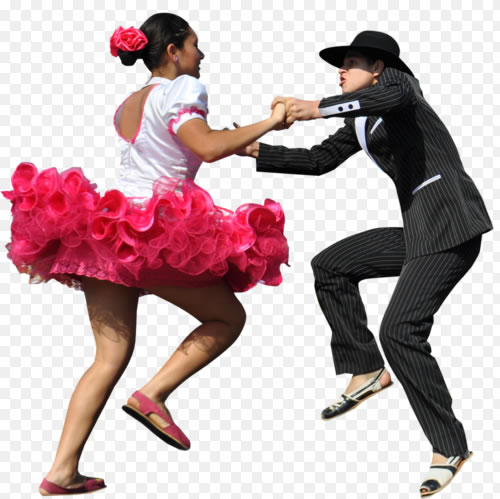 / Hutchinson, Sydney.
/ Hutchinson, Sydney.
In: World of Music, Vol. 9, No. 2, 2020, p. 89-107.
Research output: Contribution to journal › Article › peer-review
Hutchinson, S 2020, 'Dancing lo tipico: A choreomusical perspective on merengue', World of Music, vol. 9, no. 2, pp. 89-107.
@article{c8252ebf118a4e56939dc12839e922d2,
title = "Dancing lo tipico: A choreomusical perspective on merengue",
abstract = "As a dance, Dominican merengue is typically described as {"}simple{"}-so simple, in fact, that it has not yet received scholarly attention as dance. By providing a choreomusical perspective on merengue, this article shows that quite the opposite is true. In the specialised world of traditional merengue tipico, dancers serve as regulators of tradition. Dancers are judged by their corporeal understanding of musical structures and rhythms. In turn, skilled dancers are valued by musicians and exert a moderating influence on musical transformations. An emic vocabulary describes characteristics of both music and movement that underscore their reciprocal influence throughout merengue's history. This case study contests notions of simplicity and sexiness often tied to Caribbean dance; it also speaks to broad patterns found throughout Latin America while demonstrating the utility of the holistic perspective offered by chor-eomusicology.",
An emic vocabulary describes characteristics of both music and movement that underscore their reciprocal influence throughout merengue's history. This case study contests notions of simplicity and sexiness often tied to Caribbean dance; it also speaks to broad patterns found throughout Latin America while demonstrating the utility of the holistic perspective offered by chor-eomusicology.",
author = "Sydney Hutchinson",
note = "Publisher Copyright: {\textcopyright} 2020 VWB - Verlag fuer Wissenschaft und Bildung. All rights reserved.",
year = "2020",
language = "English (US)",
volume = "9",
pages = "89--107",
journal = "World of Music",
issn = "0043-8774",
publisher = "VWB - Verlag fuer Wissenschaft und Bildung",
number = "2",
}
TY - JOUR
T1 - Dancing lo tipico
T2 - A choreomusical perspective on merengue
AU - Hutchinson, Sydney
N1 - Publisher Copyright: © 2020 VWB - Verlag fuer Wissenschaft und Bildung.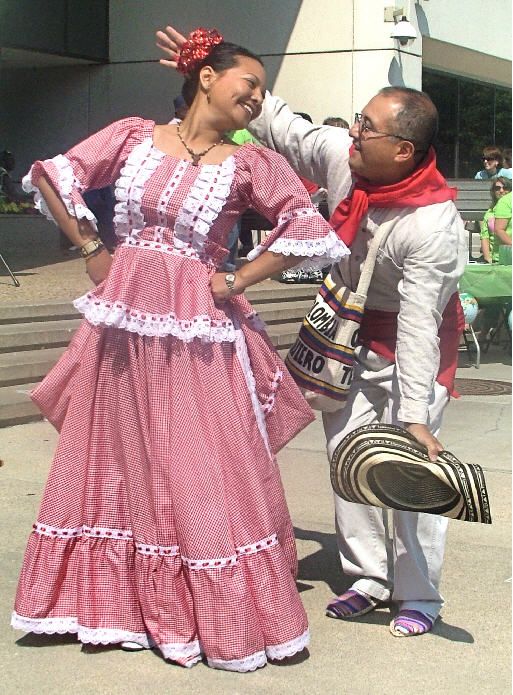 All rights reserved.
All rights reserved.
PY - 2020
Y1 - 2020
N2 - As a dance, Dominican merengue is typically described as "simple"-so simple, in fact, that it has not yet received scholarly attention as dance. By providing a choreomusical perspective on merengue, this article shows that quite the opposite is true. In the specialised world of traditional merengue tipico, dancers serve as regulators of tradition. Dancers are judged by their corporeal understanding of musical structures and rhythms. In turn, skilled dancers are valued by musicians and exert a moderating influence on musical transformations. An emic vocabulary describes characteristics of both music and movement that underscore their reciprocal influence throughout merengue's history. This case study contests notions of simplicity and sexiness often tied to Caribbean dance; it also speaks to broad patterns found throughout Latin America while demonstrating the utility of the holistic perspective offered by chor-eomusicology.
AB - As a dance, Dominican merengue is typically described as "simple"-so simple, in fact, that it has not yet received scholarly attention as dance. By providing a choreomusical perspective on merengue, this article shows that quite the opposite is true. In the specialised world of traditional merengue tipico, dancers serve as regulators of tradition. Dancers are judged by their corporeal understanding of musical structures and rhythms. In turn, skilled dancers are valued by musicians and exert a moderating influence on musical transformations. An emic vocabulary describes characteristics of both music and movement that underscore their reciprocal influence throughout merengue's history. This case study contests notions of simplicity and sexiness often tied to Caribbean dance; it also speaks to broad patterns found throughout Latin America while demonstrating the utility of the holistic perspective offered by chor-eomusicology.
UR - http://www.scopus.com/inward/record.url?scp=85102493611&partnerID=8YFLogxK
UR - http://www. scopus.com/inward/citedby.url?scp=85102493611&partnerID=8YFLogxK
scopus.com/inward/citedby.url?scp=85102493611&partnerID=8YFLogxK
M3 - Article
AN - SCOPUS:85102493611
VL - 9
SP - 89
EP - 107
JO - World of Music
JF - World of Music
SN - 0043-8774
IS - 2
ER -
Turns the head more than rum: how the merengue dance is the main dance of the Dominican Republic
TravelHistory
Rumble. Looks like they knocked down the door on the floor above. "Baylar contigo!" (“Dance with you!”) shouts Enrique Iglesias from someone’s smartphone. Laughter, screeching, rhythmic knocking. The ceiling is trembling. Are they dancing? I sleepily stare at the display of my mobile phone: two in the morning. In fact, the three-story villa Gansevoort in the town of Sosua near Puerto Plata is an elite vacation home for wealthy introverts. Even the staff whispers…
Listening to fragmentary phrases from above. It turns out that a Dominican diplomat descended on my neighbors in the company of the concierge and the driver Daniel, who brought me here.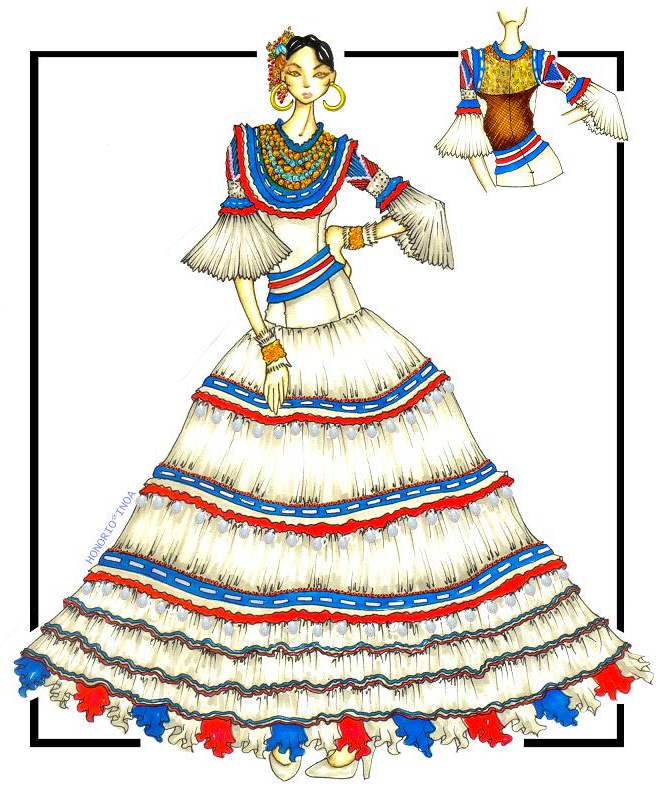 I cover my head with a pillow. But sleep is still not possible.
I cover my head with a pillow. But sleep is still not possible.
- You probably tasted rum all night? I ask Daniel the next morning.
— What are you! I'm driving. And why drink? As soon as I hear the rhythms that are close to my heart, my legs begin to dance on their own,” the driver laughs. And suddenly, releasing the steering wheel at full speed, he starts clapping his hands and jumping to the beat of a fast farcical song coming from the car radio. - It's merengue! nine0003
Heartbeat
Merengue is the main dance of the Dominican Republic. Since November 30, 2016, it has been included in the UNESCO Intangible Heritage List. It has a stronger effect on Dominicans than 10-year-old añejo rum. Still: the merengue has an aging of five centuries.
“Merengue flows in our blood, its rhythm coincides with the beating of our hearts,” says Daniel.
According to one version, the dance was created by the ancestors of the Dominicans - African slaves of the Spanish and French colonizers.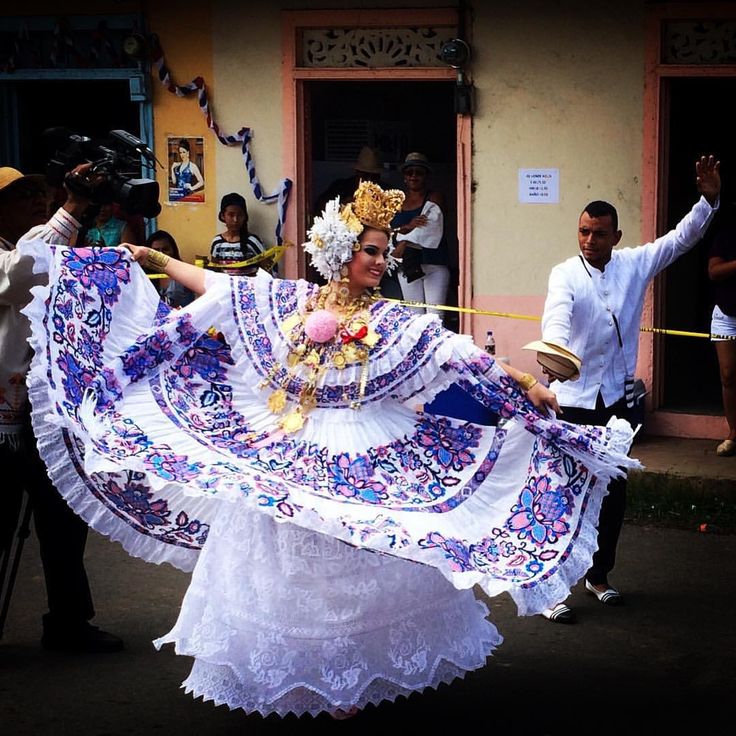 They worked in the sugar plantations and gold mines of the island of Haiti with chains on their feet. Movements were limited: small steps left and right and tilts. The overseer urged on the slaves with rods - they jumped. And so the rhythm was born. nine0003
They worked in the sugar plantations and gold mines of the island of Haiti with chains on their feet. Movements were limited: small steps left and right and tilts. The overseer urged on the slaves with rods - they jumped. And so the rhythm was born. nine0003
The gradual abolition of slavery began in the 1790s. Not all French and Spaniards supported the liberation movement - some tried to strengthen their positions as slave owners and colonizers. The slaves were finally freed in 1822, and in 1844 the Spanish political community "Trinitaria" proclaimed the eastern part of Haiti an independent Dominican Republic.
Blacks, mulattos and white Europeans became citizens of the young state. And the composer Juan Bautista Alfonseca set the rhythm of plantations to major music. It turned out to be a light life-affirming dance, which was given the name merengue . Why this is so is unknown. The Dominicans themselves associate the name of the dance with an airy meringue (meringue) cake: the movement of the whisk when whipping proteins and the dance steps are somewhat similar.
Probably, the Dominicans considered the merengue the beginning of a new, sweet life. But it was too early to dance with joy: the young republic did not have enough strength and resources for self-government. Spain, France and the United States fought for the Dominican lands. Neighbors from Western Haiti periodically attacked. The country is mired in debt. nine0003
In 1861 the Dominican Republic was annexed by Spain, in 1916 it was occupied by the USA. The West did not want any reminders of slavery and African culture. Activists tried to ban the provocative dance, but to no avail.
And in 1930, Rafael Trujillo came to power. The ruler returned to the Dominicans the merengue tipico (a version of Alfonseca's times), ordered them to compose variations - new melodies and words - on the theme of the merengue and declared the dance a national treasure.
Trujillo came from the lower Dominicans. In addition, he wanted to win over the people with the help of merengue, to show that "life has become more fun.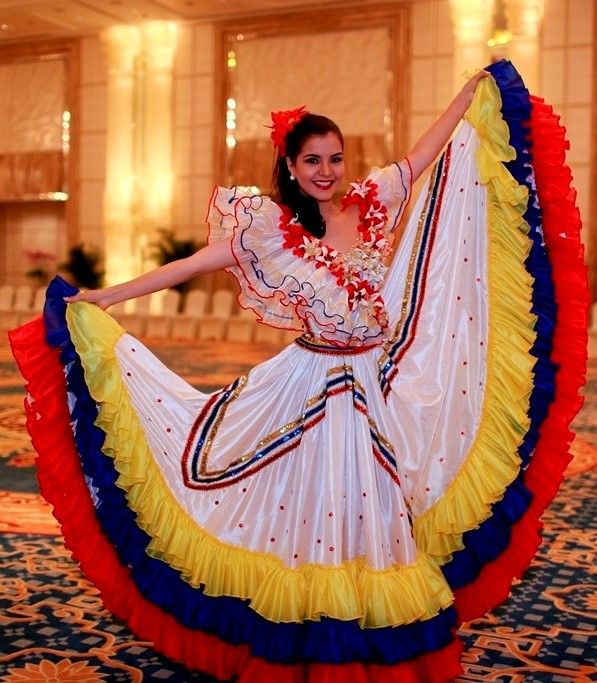 " However, the dictator considered the white and “not too dark” population of the country to be the people. Trujillo hated his African roots. On his orders, the soldiers massacred thousands of blacks. When at 19On the 61st, Trujillo was killed by the conspirators, the merengue turned into a dance of freedom and equality. And the Dominican Republic — to the dance floor…
" However, the dictator considered the white and “not too dark” population of the country to be the people. Trujillo hated his African roots. On his orders, the soldiers massacred thousands of blacks. When at 19On the 61st, Trujillo was killed by the conspirators, the merengue turned into a dance of freedom and equality. And the Dominican Republic — to the dance floor…
Houses of all colors of the rainbow with openwork architraves and white balconies are crowded on the streets of Puerto Plata. They were built by the Spanish colonizers. Exhausted citizens hide under the umbrellas of street cafes. An artist with an easel in the shade of a flamboyant (“fire tree”) draws a colonial house, and his legs move continuously left and right. This is because the wandering musician, sitting on the stone porch of the house, strums the merengue guitar. nine0003
A police officer at a road junction pulls a ringing cell phone out of his pocket, but is in no hurry to answer. Ringtone - merengue! And the elderly stocky law enforcement officer suddenly begins to wriggle to the beat, like an iguana.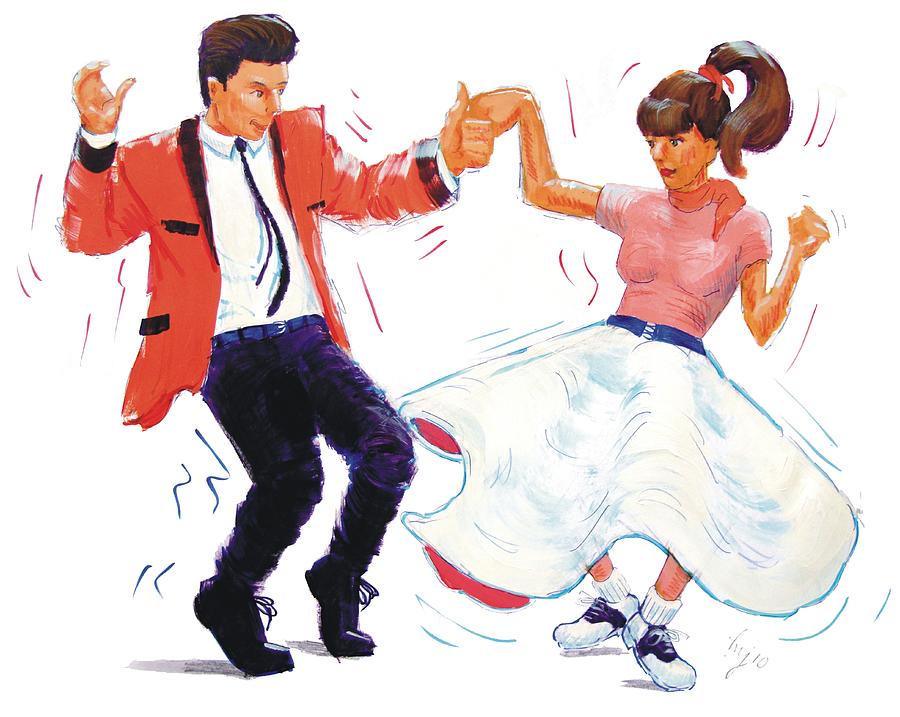
Surfers on the ocean coast and they dance.
— How are you? OK! - swarthy surf instructors Jerry and Dauri improvise rap in Russian to the rhythm of merengue, having learned that I am from Russia. Their colleague, the German Markus Bohm, dances with them. He came from prosperous Germany to the Dominican Republic to “catch a wave” and stayed for 28 years. nine0003
— In the Dominican Republic, celebration and joy all year round, explains Markus.
He is not the only white foreigner who voluntarily gave up European comforts for an endless dance party. Here is another downshifter - Italian Andrea Attus. He quit publishing in Milan and now works on a cable car in Puerto Plata.
— In the Dominican Republic, no one cares who you are and where you come from. Dancing gradually blurs the lines between races and social classes, says Andrea. “Even the representatives of the lower strata do not feel hurt and enjoy life. nine0003
Pride of the poor
The lower classes of Dominican society are farmers, fishermen, fruit merchants, workers in national parks.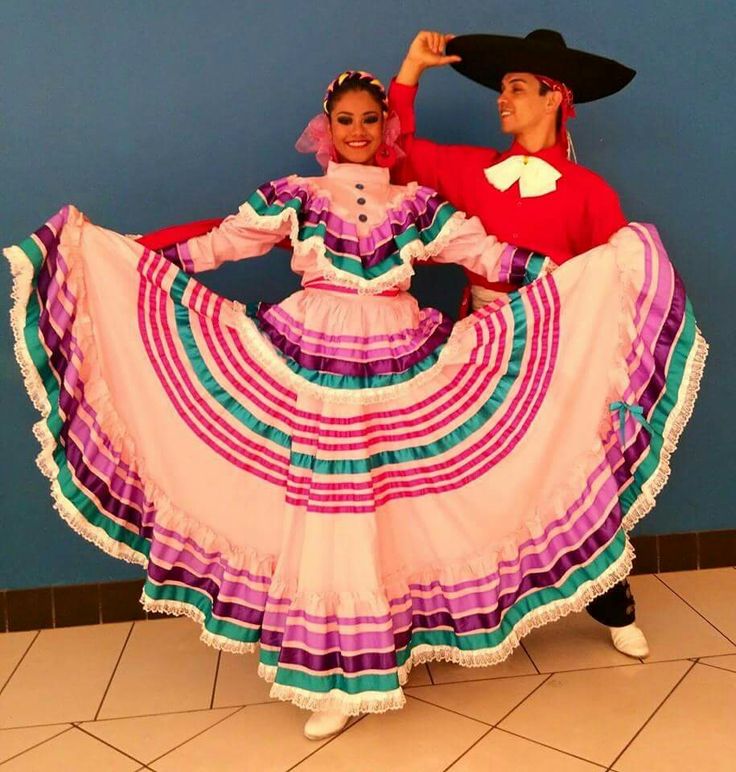 Almost the entire territory of the country is occupied by forests, fields, gardens, limestone caves. Many villages are located right in the nature reserves.
Almost the entire territory of the country is occupied by forests, fields, gardens, limestone caves. Many villages are located right in the nature reserves.
On the path of the reserve El Choco , in the suburbs of Cabarete, a milk truck with a beaten canister is dragged on a donkey. In the thickets of giant ferns hide shacks, hastily knocked together from rough palm boards. There are gaps between the boards. In one hut, a door was knocked off its hinges and tied to a post in the opening with a rope. nine0003
Inside, on four pegs, there is a sheet of iron covered with ashes, apparently from a landfill, on top - red-hot bricks and charred saucepans. An elderly woman in a faded dress sits on a shabby makeshift stool. In front of her, bean pods are laid out on limestone. Apparently, he cooks la bandera, a favorite dish of the local poor, reminiscent of the Dominican tricolor flag. Meat is red, a symbol of independence. Rice is white, salvation. Blue-violet beans - blue, freedom . .. Seeing me, the hostess introduces herself as Petrulencia and smiles cordially. She is missing her front teeth. nine0003
.. Seeing me, the hostess introduces herself as Petrulencia and smiles cordially. She is missing her front teeth. nine0003
— Yes, we live in poverty. But we have much to be proud of. After all, it was we, the poor, who invented bachata, which is now danced even in secular society! Petrulencia assures me.
The bachata dance ( bachata - “party”, “drunkenness”) was born in the time of Trujillo. It was also called the music of bitterness - amargue . The peasants slowed down the rhythm of the merengue and composed minor melodies: this option was more suitable for their lifestyle.
It was considered bad manners to perform amarge in the highest circles. But at 19The popularization of this musical style began in the 70s. The prejudice against bachata was finally broken in 1990, when the Dominican pop singer Juan Luis Guerra released the album "Pink Bachata", the songs of which immediately became hits even among the upper strata of society.
Simultaneously with bachata, the image of a simple woman in curlers came into fashion.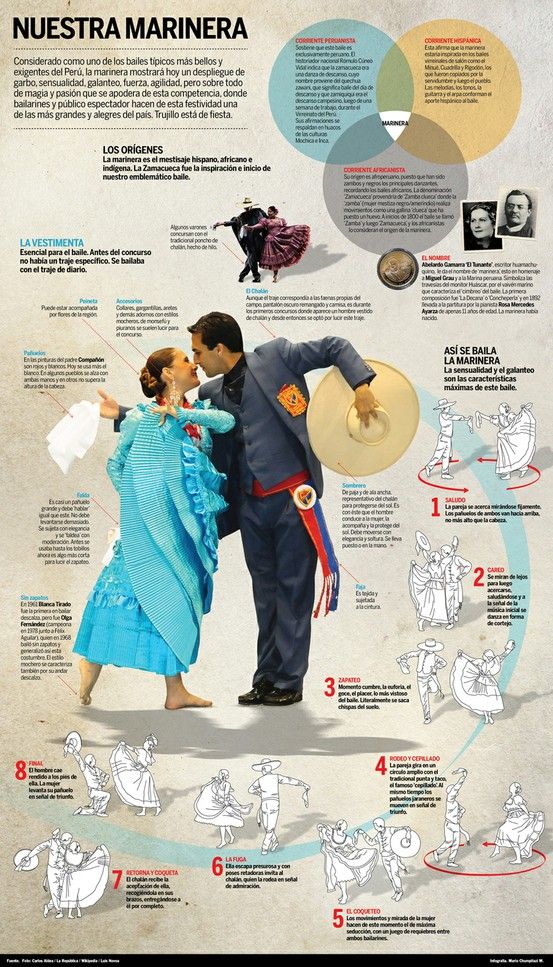 When going to dances, peasant women curl their hair in hairdressers. Small curls (African heritage) are considered ugly. If you look bad, they won't invite you to dance. nine0003
When going to dances, peasant women curl their hair in hairdressers. Small curls (African heritage) are considered ugly. If you look bad, they won't invite you to dance. nine0003
In 2016, during the election campaign of the current President of the Dominican Republic, Danilo Medina, posters were hung all over the country: Danilo, as his fellow citizens call him in a brotherly way, hugging a lady in curlers. The Dominican leader made the right bet. From the point of view of the people, a good president is one who honors dancing.
We don't complain. After all, no one encroaches on our freedom anymore. This thought is easy to live with. For example, for a whole week I think about how I will go to a disco on Friday night. The weekend is ahead, dance till you drop,” a resident of the village of Carlos tells me. And in the meantime he dances. Getting ready. nine0003
Red day
Friday evening. On Columbus Square in Santo Domingo, the "merengue gang" performs - musicians in simple checkered shirts. They play on some boxes and graters. Bursting, chirping, rattling sounds are reflected from the walls of the fortress. Feeling like I'm inside an old music box.
They play on some boxes and graters. Bursting, chirping, rattling sounds are reflected from the walls of the fortress. Feeling like I'm inside an old music box.
“The Box” is our marimba,” explains my guide from the Dominican Ministry of Tourism, Prudencio Ferdinand, a native of Santo Domingo. - Metal plates are attached to the front wall of this box, and there is a hole under them. The plates are tapped with hands or sticks, a sound with resonance is obtained. "Grater" - guira. Metal roller with pimples, which are driven back and forth with a scraper. nine0003
The obligatory instrument is the African tambora drum: it is beaten with both hands from the left and right. More guitars. And an accordion. Trujillo ordered to bring it from Germany in order to perform merengue in a modern way. The classical merengue ensemble has at least 15 musicians.
The crowd moves to the concert with the power of an ocean wave. People, like lizards, clung to the entire hill to the very foot of the fort.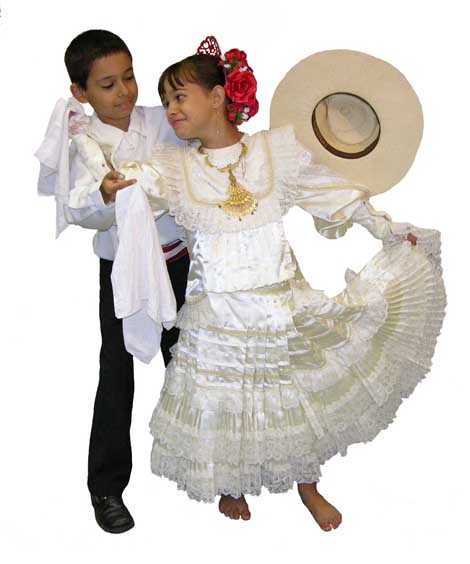 There is nowhere to dance, but that doesn't stop anyone.
There is nowhere to dance, but that doesn't stop anyone.
A guy with a glass in his hand, spinning his partner, accidentally splashes rum on the head of a lady who has sat down to rest. She turns around angrily. “Sorry, I got carried away with the dance!” — the guy justifies himself. And the woman immediately breaks into a smile. A hunched old man is spinning with a young mulatto beauty. The obese pregnant madam bounces to the beat. Their movements are clear and harmonious. nine0003
- Nothing complicated. When you dance merengue, you need to follow your partner carefully. And bachata is completely danced close to each other, this is a sensual dance. You definitely won’t get off the beat,” Prudencio instructs.
Merengue and bachata sound, perhaps, from every courtyard, window, door of Santo Domingo. Dance clubs everywhere. There are elite: spacious multi-tiered halls with expensive bars, a stage, laser installations. There are "folk": gloomy little rooms on the first floors of peeling houses from the time of Columbus.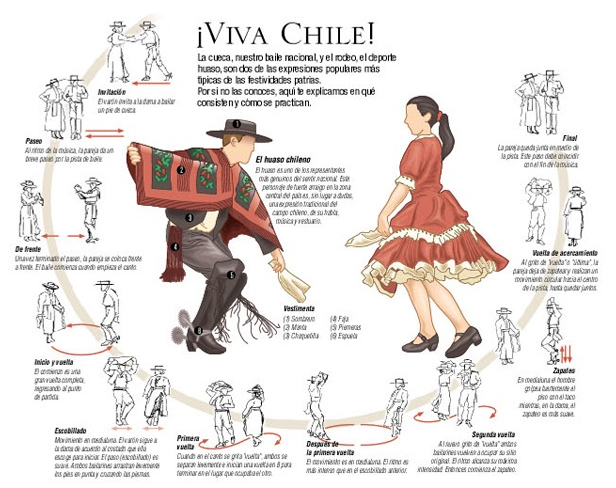 A white-haired old man, dark as the night sky, runs out of one such room, grabs my arm and pulls me inside, into a cloud of cigar smoke. nine0003
A white-haired old man, dark as the night sky, runs out of one such room, grabs my arm and pulls me inside, into a cloud of cigar smoke. nine0003
- Don't be afraid! laughs Prudencio. He wants to dance with you. It's Friday. All the people are having fun!
Alas, I can't dance merengue or bachata.
Secret of Mamajuana
- Step with the right foot. Left step. Further. Closer. Turn. Uno, dos, tres, cuatro! - the animator teaches me at the Paradisus hotel in Punta Cana.
Punta Cana is a resort for foreigners. Almost all local residents work in the tourism industry. Dancing mostly in hotels. At Bahia Principe , for example, almost the entire staff, led by the director, starts dancing when tourists stop by. They sing a song of their own composition in the merengue rhythm: “This is Bahia Principe - a hotel!” Almost every hotel in Punta Cana hosts dance master classes in the evenings. Dominican businessmen believe that a hotel without merengue and bachata will lose to competitors.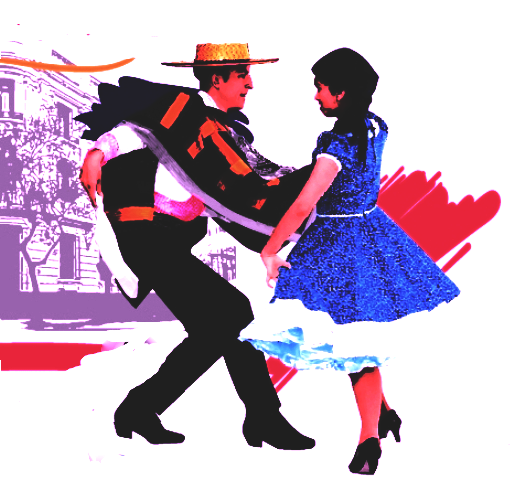
I try to follow my teacher's steps. But I lack lightness, looseness, a sense of rhythm.
- So drink mamajuana! the dancer advises. nine0003
Mamajuana is a Dominican alcoholic drink. It is prepared from rum, red wine, tree bark, various herbs, roots and spices. According to the most common version, pot-bellied wicker bottles with a narrow neck were previously called mamahuana. They kept tincture. The locals are sure: mamahuana excites and invigorates. In addition, the national drink, like merengue, is associated with freedom and equality: mass production of mamajuana was established only after the death of Trujillo.
I knock over a glass. And now it seems that the merengue rhythm already coincides with my pulse. nine0003
A precocious porter in a black uniform jumps onto the dance floor, with which he almost blends in. He snatches a tourist from a group of spectators - a grand lady in diamonds. She leaves her bored husband with a glass of mamajuana and goes dancing with a smile.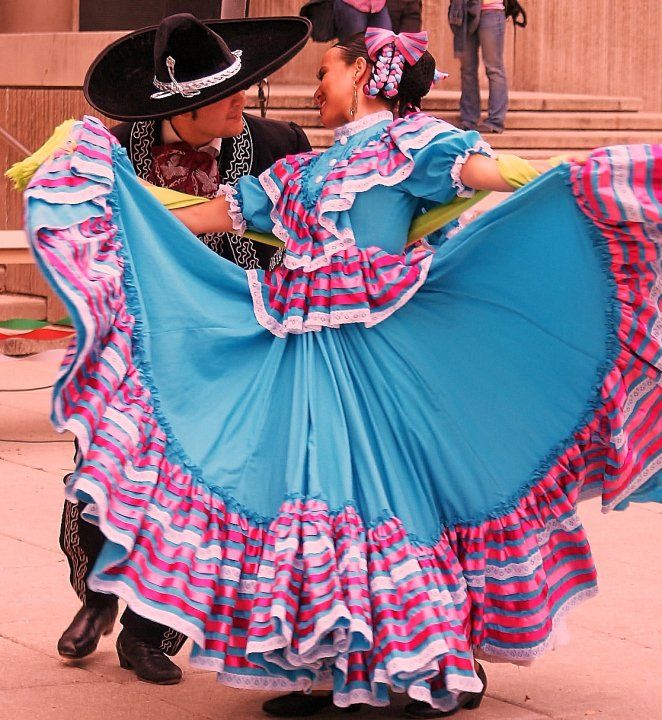
“Dancing makes people happy,” Dominicans say. And all people are happy the same way. Regardless of origin, skin color and social status.
TERRAIN ORIENTATION
Dominican Republic
Area 48,670 km² (128th in the world)
Population 10,535,000 (86th)
Population density 216 inhabitants/km²
Capital Santo Domingo
SIGHTSEEING National park with three lakes Los Tres Ojos Amber Museum in Santo Domingo.
TRADITIONAL DISHES yucca root casabe tortillas, tostones banana chips, puerco en puya baked pork. nine0121 TRADITIONAL DRINKS Dominican coffee, rum, mamajuana.
SOUVENIRS doll without a face Lime - a symbol of the equality of nations and races, jewelry made of larimar - a semi-precious blue stone ("Dominican turquoise").
distance from Moscow to Punta Kana ~ 9250 km (from 12 hours in flight)
Time lags behind 7 hours
Visa Russians do not require
Dominican Peso (50 DOP 9 DOP 9 DOP ~ 0.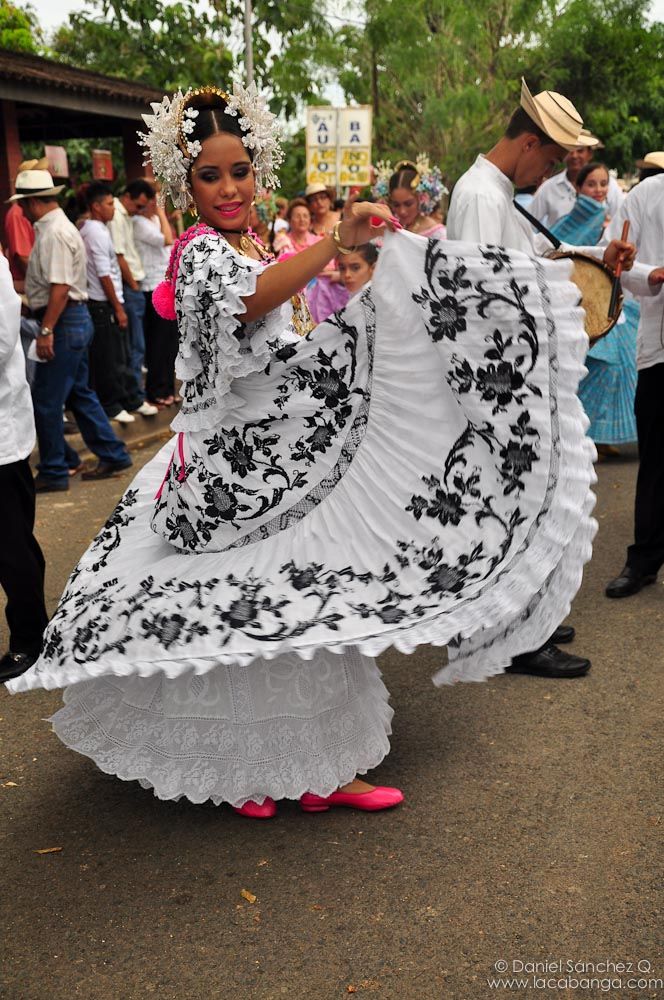 9 USD )
9 USD )
MEDIA
Material published in Vokrug Sveta magazine No. 7, July 2018, partially updated in May 2022 Seavey L. "Dominican Republic. Guide"
Advertising. LLC "Yandex"
Katerina Mironova
Dance directions at the Criola Dance school
In Criola Dance we teach everyone to dance - regardless of age, gender and training!!
The most popular dances of the southern countries: Kizomba, Kizomba for girls (solo), Booty dance / Twerk + stretching, Salsa, Bachata. In groups and individually!
Bachata, merengue (bachata, merengue).
Merengue is one of the simplest and most fun pair dances! Originating in the early 20th century, by the 50s. it has become a symbol of the Dominican Republic, a national dance of all segments of the population. And today it is danced by all generations, all cities and villages of the island. There are several styles of merengue: merengue tipico (merengue típico), with the most saturated sound, at a crazy pace; merengue 80-90x, more calm and melodic; mambo de caye (mambo de calle). Following the general trends in music, since the 80s. an electric guitar appears in the merengue, which makes it more modern and relevant in sound. Merengue is not a romantic dance, it is always a game in which a man tries to win over a woman, and at the last moment she slips away and sometimes she herself makes fun of the gentleman. The couple is dancing in a very relaxed manner, as the merengue rhythm is simple and well audible.
Bachata
Bachata, as a dance, is based on the merengue and partly on the bolero. Dancers in the Dominican Republic (the birthplace of bachata) dance in a very simple, relaxed way, using a lot of decorations and "chips" with their feet. Europeans and Americans, falling in love with bachata for its sensuality and grace, almost completely changed the dance, filling it with figures from salsa, ballroom dancing, hip-hop, and rnb.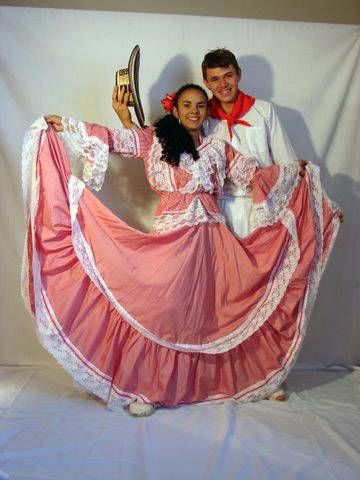 Today we can safely talk about different dances - about European bachata (bachata-modern, bachata sensual) and authentic, Dominican bachata, simpler and more natural. nine0003
Today we can safely talk about different dances - about European bachata (bachata-modern, bachata sensual) and authentic, Dominican bachata, simpler and more natural. nine0003
There are no temporary group bachata classes, you can sign up for individual lessons or come to our other group classes:
Couple dances - kizomba
Solo dances - female style in kizomba, reggaeton, booty + stretching
Current schedule and prices - http://crioladance.ru/schedule/
For all questions, call us +7 (915) 416-10-70
Kizomba (kizomba).
Kizomba (kizomba) is a pair dance to the music of the same name, which is popular all over Europe today! nine0003
Kizomba is not a Latin American dance! Its roots go back to Africa, the region of Angola, but active development is taking place in our days (France, Holland).
Kizomba is a “bottom” dance, in which the arms and body play the role of a “frame”, a rigid support, while the legs and hips are in constant calm and, as it were, swaying movement. Learning how to dance kizomba is not difficult - it is important to feel the rhythm and move into the music gently and confidently.
We teach this at the initial stage (2-3 months). nine0003
Schedule:
W
19: 00-20: 00 -Offline in the Hall+ Online
PHOLOW
20:00-21:00 - online
Fitness + Twerk (Booty Dance / Twerk)
Booty dance, twerk, twerking is one of the most popular solo directions for girls today!
In our school, these classes are held mainly in the fitness version:
- practicing all movements to music
- small choreography
- strength exercises for the buttocks and abs
- extension
Booty Dance lessons are perfect for anyone who is tired of sitting still and wants to warm up!
Numerous testimonials from students who have been and are studying at the Criola Dance school can be read here.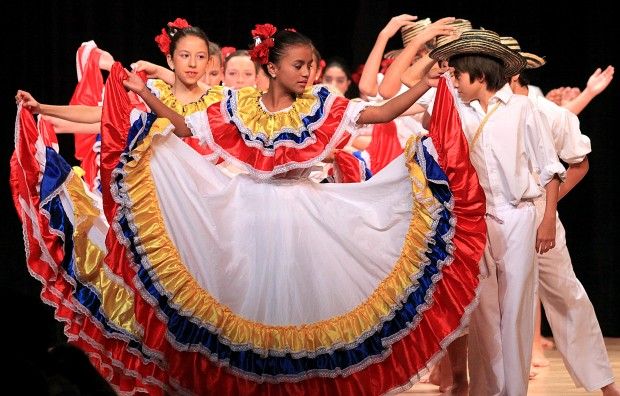
Schedule:
Mon
20:00-21:00 - fitness, twerk + stretching ONLINE
Kizomba Female style
Kizomba in her solo version for girls!
- You don't have to worry about having a partner!
- Suitable for the most modest ladies who have never tried dancing in their lives!
- Unleashes the body and spirit and teaches you to confidently stay on your heels!
- Does not require any special training! nine0280
Dada! Age and preparation are absolutely not important - just come and enjoy the smooth movements and beautiful music!
This is not a very difficult course in terms of physical activity, where the emphasis is on dance, the development of coordination and plasticity.
Schedule:
W
19: 00-20: 00 - Kizomb Solo (Female style) Offline + online pits pits solo (female style) ONLINE
Salsa (salsa).
